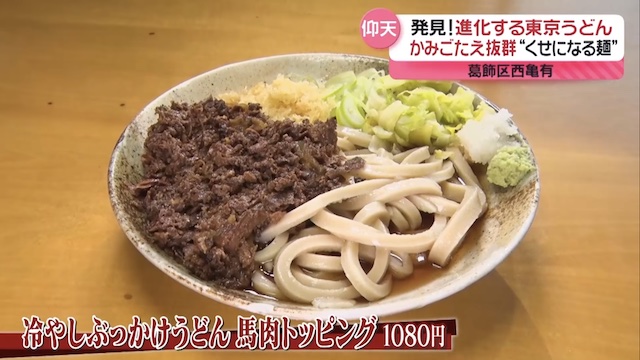TOKYO, May 13 (News On Japan) - Japan's beloved soul food, udon, is experiencing a new wave of innovation. In the fiercely competitive "udon battleground" of Tokyo, where renowned eateries from across Japan converge, a fresh movement is reshaping the traditional noodle scene. New udon creations are being churned out as part of a spirited battle for survival among these establishments.

Starting just a short walk from Aoyama-itchome Station in Tokyo, the evolving Tokyo udon scene is prominently featured in a restaurant nestled in the underground food district of a building right in front of the station. Here lies Iwaya Saki Udon, a staple for locals and a testament to the ongoing udon evolution.
For Daigo Ohu, a reporter hailing from Shikoku and a self-proclaimed udon aficionado, the restaurant's standard cold udon topped with a raw egg and dashi soy sauce is a soul-soothing favorite. "The real test of a noodle shop's mettle is in its udon," Ohu notes, savoring the noodles' perfect firmness and delicate throat feel. The dashi, sweetened slightly, wraps around the udon, softened by the egg, creating a gentle, enveloping taste.
The restaurant manager, Sato, shared insights into their meticulous noodle-making process. "Our noodles are made from carefully selected wheat, kneaded into dough, and then left to rest for two days to enhance the wheat's aroma," explained Sato. The noodles are then hand-pressed and machine-stretched to achieve the ideal thickness and length, ensuring a satisfying gulp.
What sets this Tokyo outlet apart is its unique offering of Hormone Udon, not available at the main branch in Nishinomiya, Hyogo Prefecture. This dish features a generous amount of Wagyu beef offal, a rare find in traditional udon servings. "The umami seeps into your body, different from the usual plant-based broth, adding a savory complexity to the warm, chewy noodles," commented Ohu.
This evolution of Tokyo's udon is also witnessed in other districts such as Shinjuku, where the Uozen front station restaurant serves up a limited number of rich shellfish broth udon dishes each day. The broth, enhanced by two large clams, pairs magnificently with the noodles, making each bite a harmonious blend of flavors and textures.
In the residential area near Kami Station, another trendsetter in the evolving udon landscape is the Fujikawa shop, known for its Yoshida-style udon topped with cabbage and horse meat. "The robust flavor of the wheat becomes more pronounced with each chew, and the rich soy-based broth complements the firm noodles perfectly," Ohu describes the experience.
The evolving udon scene in Tokyo continues to surprise and delight, with innovative recipes that push the boundaries of traditional Japanese cuisine. As these establishments carve out their niches, they not only survive but thrive, proving that even the most classic dishes can be reinvented for modern palates.
Source: 日テレNEWS















